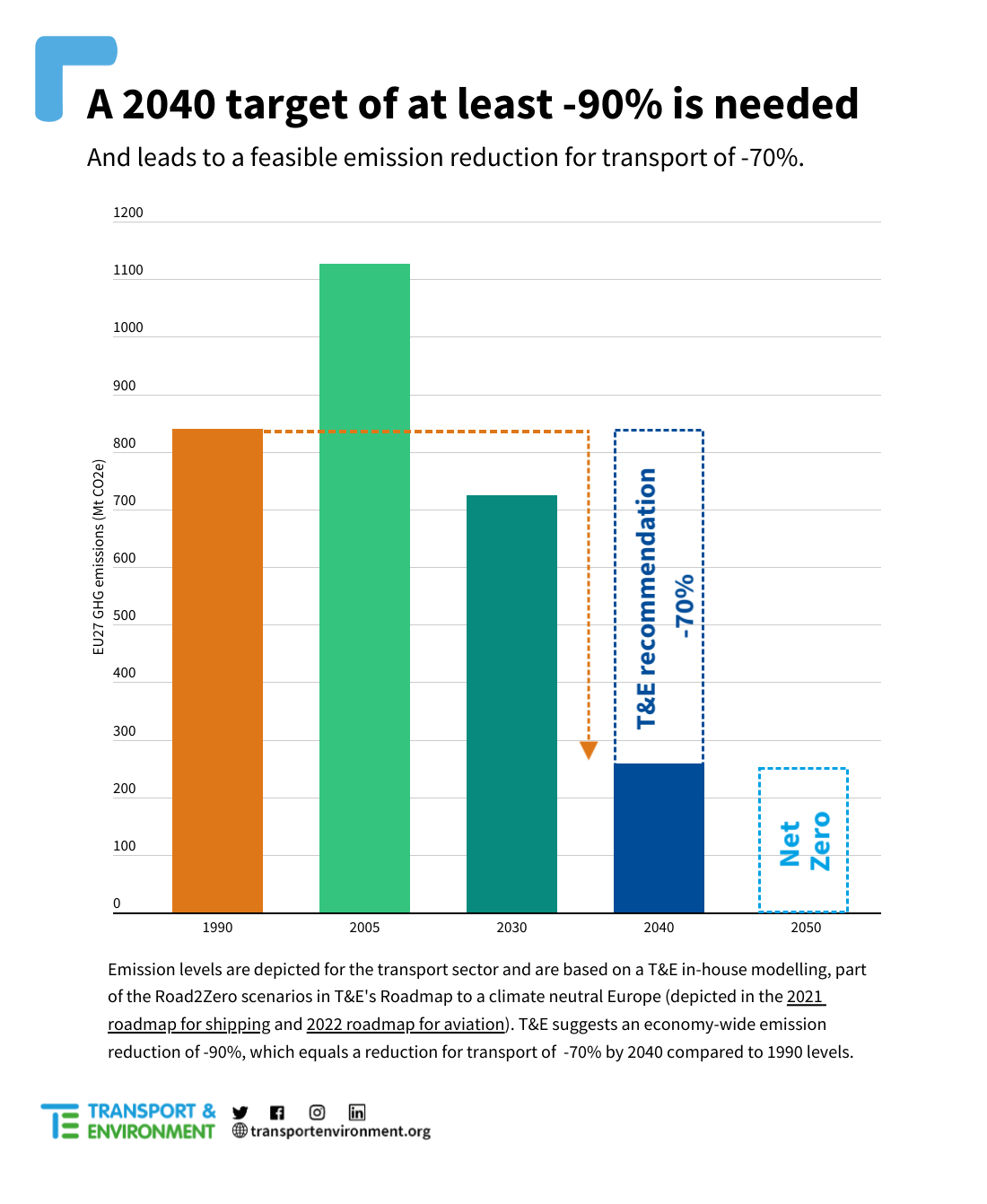Being a procrastinator in highschool doesn’t have serious consequences. Procrastinating with your housework is also fine. But we have a problem when the procrastinators are those with the power to decide whether future generations will live on a livable planet or not.
The adoption of a EU 2040 climate target might fall in the hands of procrastinators [1]. The process to set the EU on the pathway to climate neutrality with an interim 2040 target – whose adoption is, let’s remember it, requested by the EU Climate Law – is just at inception and is already facing hesitation and resistance. As the political drama around the adoption of the Nature Restoration Law demonstrates, climate policies are becoming a political battlefield. That’s why it seems easier to procrastinate rather than initiate.
Some are saying that maybe we don’t need an EU climate target for 2040. Their argument is, the EU has just adopted a big package of climate and energy policies to meet the world’s most ambitious 2030 climate targets. We should take a break now and focus on implementation, they say. In short, implementation and long term planning would be mutually exclusive. But in reality, they are not. Governing a country with this mindset would be like driving a car wearing a blindfold. Another argument is, the EU’s effort won’t achieve anything if China and India keep burning fossil fuels. Here too, committing to the sustainable transition at home doesn’t rule out climate diplomacy to push and support others to do the same.
Procrastination and excuses are not an option. Let’s take a step back and look at the situation as if we were studying it from history books. Year 2023: a group of world’s best scientists – aka the Intergovernmental Panel on Climate Change – warned world’s leaders and non-state actors that we have reached the point of no return on climate change. Global temperatures are alarmingly high, including in Antarctica, extreme weather events are hitting the global south as well as the richer western countries, sparing none. But some leaders are saying that we don’t need to preoccupy ourselves with what will happen in 17 years.. That’s ironic: how many of us wished that those in power in the 1970s thought about what would happen to human society if we burnt fossil fuels without limits?
Despite the resistance, the European Commission is abiding to the Climate Law and aiming to define a target (or a range of targets) for 2040. Last month, the public consultation it had launched in May closed [2]. Think tanks and civil society organisation shared their proposals [3], including T&E which suggested a 70% emissions reduction in the transport sector in 2040 [4] (which translates to a 90% reduction economy-wide) compared to 1990 levels.

Figure 1: T&E transport modelling of Road to Zero scenario
NGOs and think tanks aren’t the only ones making noise and calling for more climate ambition. The first climate advisory body of the EU (full name The European Scientific Advisory Board on Climate Change) published its advice to the European Commission on the 2040 climate target. Its conclusions in short: climate mitigation must accelerate, EU emissions must and can decrease by a range of 90-95% compared to 1990 by 2040 [5]. There is no evidence nor suggestion that taking a break because we have already achieved a lot makes sense science-wise. Procrastination was not an option recommended by the board. No surprises there.
As we can learn from the last few years – from the adoption of EU Green Deal to the Fit for 55 policy package – target setting is not a superfluous exercise. On the contrary, it is the spark that ignites the engine of change. Without a target setting the direction, we wouldn’t have the mobilisation of minds, businesses, and national and international authorities to find answers to the question: how do we transition to sustainable, thriving and competitive economies for the benefits of current and future generations before it is too late?
[1] Energy Monitor, June 27, 2023, Does the EU need a 2040 climate target? Available here.
[2] Consult the dedicated webpage on the European Commission’s portal ‘Have your say’.
[3] See the review of available scenarios made in Ecologic (2023) Designing the EU 2040 Climate Target. Available here.
[4] T&E (2023) Setting 2040 climate ambition. Available here.
[5] Consult the ESABCC website for more information.


